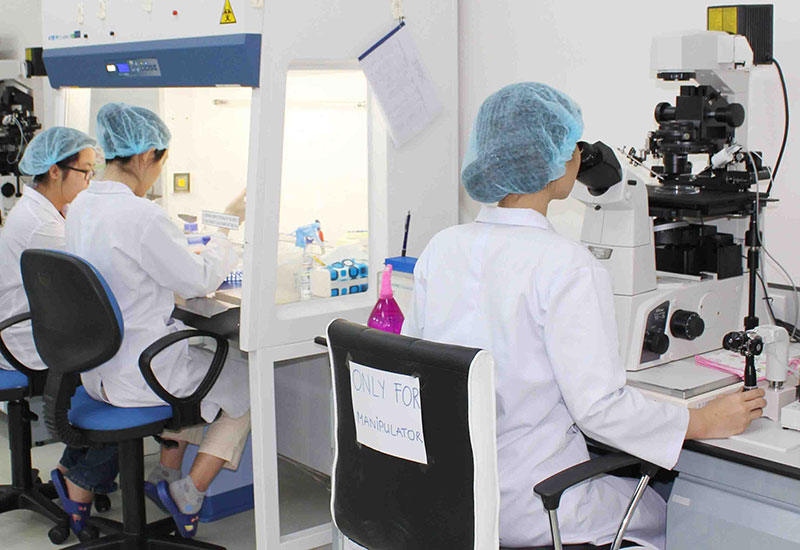
The application of stem cells in agricultural development, especially in the selection and conservation of rare genetic resources, is an important topic in countries with a developed livestock industry.
 |
| The scientists at the Cell Reprogramming Lab. |
The application of stem cells in agricultural development, especially in the selection and conservation of rare genetic resources, is an important topic in countries with a developed livestock industry.
The stem cell technology not only enhances the quality and productivity of plants and animals to meet the need for food, but also creates pharmaceuticals and preserves rare animal genetic resources.
In the future it can be used to develop tissue sources and alternative organs as well as vaccines.
With the increase in the world's population and the expansion of industrial zones, pollution has become serious, and biodiversity and animal resources are threatened.
In developing countries such as Vietnam, farmers only focus on exploiting a limited number of high-yield species and hybrid species. The lack of a strategy to preserve good indigenous gene sources and the popular use of high-yield cross-bred species have led to a decrease in genetic resources.
This will lead to a crisis in genetic heritage of animals and livestock.
Statistics show that many indigenous breeds have disappeared while many species are threatened with extinction. The use of stem cell technology to preserve the efficiency of animal genetic resources is essential.
To date, the gene sources of domestic and rare animals in Vietnam have been mainly preserved in-situ or ex-situ. However, preserved animal life is limited.
Moreover, the preservation of sperm and embryos is limited due to the need to apply modern reproductive biotechnology techniques such as IVF, fertilization microscope, embryo development and embryo transfer.
The scientists from the Cell Reprogramming Lab from the Biotechnology Faculty under the International University, a member of the HCM City National University, said that hi-tech agriculture could be developed with stem cell technology and modern reproductive biotechnologies for long-term and sustainable preservation of rare genetic resources of indigenous animals.
Besides in-situ and ex-situ preservation, and sperm and embryo preservation in laboratories, applying stem cell technology (preserving the cellular form) and establishing a national center for conserving genetic sources of rare and precious animals should be done as soon as possible. If not, genetic sources will become exhausted and disappear after decades.
The scientists from the lab are carrying out research, including a national project on utilizing reproductive biotechnology to create cows which have high-quality meat (like Kobe cows).
(Source: VNN)





